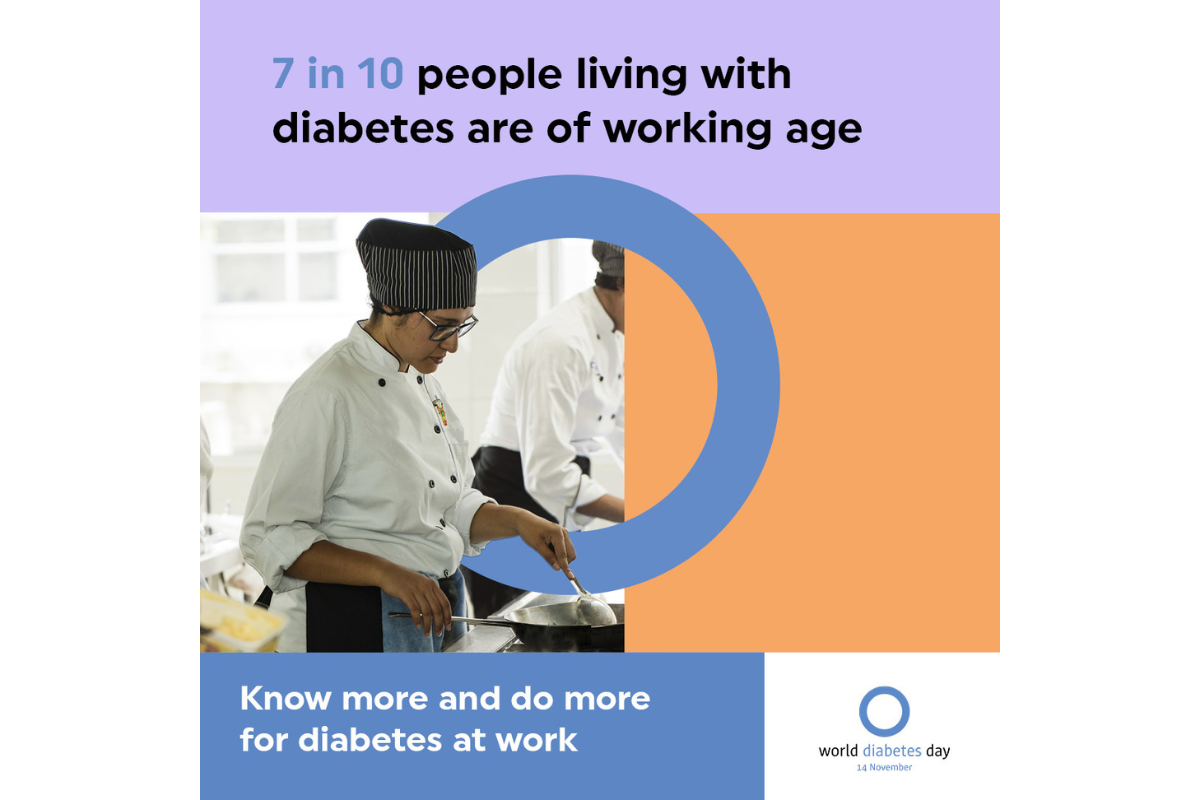Expeditious and accurate diagnoses are necessary for patients to access healthcare services and treatment options for rare genetic diseases. Although next-generation sequencing technologies have greatly increased the accuracy of diagnoses, the timeline of data analysis is long, and many laboratories are running at their full capacities, or close to it. Increasing the efficiency of case analysis and interpretation is essential to providing timely care for patients with genetic diseases. For more information on tackling this “genomic analysis bottleneck,” watch this on-demand webinar.
Helen Savage, DipRCPath, the deputy head of clinical services at the digital health company Congenica, discusses genetic disease diagnosis and strategies to improve case throughput.
Just how many genetic diseases are there, and what is the nature of their symptoms?
HS: There are between 7,000 and 8,000 rare diseases, and up to 80 percent of those have a genetic component. They range from single-system disorders, such as deafness or heart defects, to complex multi-system syndromes.
How many genes need to be scanned in order to determine the presence of a genetic disease?
HS: Due to the heterogeneity of the rare disease population, there are many relevant gene lists, and the genomic data analysis of these patients covers almost 2,000 different genetic targets. This means that panel testing is often insufficient for this purpose, and we have to increase the number of genes that we’re looking at for each individual.
Is there a benefit to defining a specific diagnosis for rare disease patients?
HS: Achieving a diagnosis has a huge impact on patients and their families, starting with simply providing answers to the questions, “Why am I different?” or “Why is my child different?” A rare disease diagnosis can also influence family planning options, as well as lead to better development tools, support for patients, and improved patient outcomes. It also enables patients and parents to better plan for their future, having as much information as is available about their condition.
The demand for genetic testing has been increasing in recent years. Can you tell us about the kind of impact this is having on the process?
HS: As the testing demand increases, we’re encountering more complex cases in which a genetic disorder has not been completely identified. We’re also seeing longer times for the interpretation of the test data, since even experienced scientists cannot be an expert on every gene they encounter.
Since we need more time to familiarize ourselves with previously uncounted genes and variants, the time it takes to complete a given case has been increasing. This increase in turnaround time for cases has led most laboratories to reach or approach their operating capacity, meaning that patients will have to wait longer for their diagnoses.
Delays in diagnosis can increase uncertainty for the family, and also postpones their access to genetic counselling. It also slows the progress of identifying new disease gene associations in very rare conditions.
What are the benefits of having a definitive diagnosis for patients with genetic disorders?
HS: Well, a definitive diagnosis opens the door to personalized medicine, potentially leading to reduced morbidity and mortality. In patients unable to get a diagnosis at the time of their first analysis, regular reanalysis of their data enables scientists and clinicians to make use of the most up-to-date knowledge and maximize the chances of achieving a diagnosis for the family.
How can Congenica help patients and their families to find a diagnosis?
HS: At Congenica, we help healthcare professionals to convert genomic data into actionable information by providing software systems and service that make the use of complex genomic data routine, accessible and ubiquitous. We work with our users and collaborators internationally to develop these systems.
How does the Congenica software and system work?
HS: Congenica provides software and services to enable rapid analysis, interpretation and reporting of next-generation sequencing data, thereby streamlining next-generation sequencing workflows. This accelerates the pipeline of translating complex genomic data into actionable information from sequences to report.
We do this for whole-genome, whole-exome and gene panel data. We accept FASTQ files, VCF files, and BAM files from all major sequencing machines compatible with reference 37 or reference 38 Genomes.
We also offer interpretation and reporting services delivered by our in-house team of clinical scientists working in the UK.
In summary, we are here to improve your analytical yield, maximize the efficiency of your workflows, and increase your confidence in each interpretation, but we do know the analysis and interpretation costs are only a part of the problem facing laboratories today, even without the impact of the current pandemic.
Is the cost of Congenica’s services generally less than what most organizations would spend in-house for the same type of analysis?
HS: When you factor in concrete times and costs, it turns out that the true cost of generating actionable genomic results are much higher than generally anticipated. The complete cost of a sample, when adding up the preparation, sequencing, analysis and reporting, is estimated at between $9,000 and $12,000. Around 70 percent of the clinical analysis cost is staff time, as the process of clinical interpretation is a largely manual process.
How long does a typical genetic clinical analysis take?
HS: Using standard workflows and tools, clinical interpretation will typically take a minimum of 11 hours for simple rare disease cases. More complex would take 16 hours on average, since they require additional exploratory analysis to pinpoint the variant, or variants, associated with disease.
Between the costs and the time associated with these analyses, the current workflows are no longer sustainable for the long term as the demand for testing increases.
Are there solutions to this lack of sustainability?
HS: One thing that would help is to identify any points in the current workflows where the process could be streamlined or made more efficient, somehow. Another possible strategy would be to identify the simple cases that involve repeating work that has already performed on recurrent variants.
Congenica looked into the analyses performed by users of our platform and found that over 20 percent of programs in our knowledge base have recurrent pathogenic or likely pathogenic variants used to identify genetic disease. This included results from gene panel, whole-exome and whole-genome testing across a wide range of different diseases with different family structures tested, including singletons, duals, trios and so on.
Additionally, there’s evidence in the literature that the gains from the automation of recurrent variants would be much higher for some disorders and populations. Almost 35 percent of cardiac arrhythmia and over 70 percent of cardiomyopathy patients with a likely pathogenic variant identified are found to have a recurrent variant that has previously been described in one or more other affected individuals.
Furthermore, over 50 percent of de novo missense variants in a developmental or epileptic encephalopathy cohort were found to be present in more than one individual, and recurrent variants have been identified as causing ophthalmic malformations in 15 unrelated families.
What is the impact of automating interpretation of known variants on the genetic testing system?
HS: Looking at a subset of 4,000 cases featuring recurrent variants in the Congenica knowledgebase, we found that automating the results of the positive cases would save 5.5 thousand hours of staff time, which is equivalent to over 340 complex cases without using the Congenica system. Using the Congenica system for this would cost a mere $25,000 to complete all analyses, but would cost $2.2 million without using Congenica at all. For those laboratories using Congenica systems currently, there’s still a 90 percent time and cost savings to be had by automating the interpretation of these known variants.
Can you explain what Congenica Express is, and discuss a little bit about it?
HS: Absolutely. Congenica Express is our automated solution for accelerating the identification of genetic disease in a given cohort.
What does this automation look like, specifically?
HS: The ultimate goal of automation is to accurately and safely process a sample, from data to report, and identify any pathogenic, or likely pathogenic, variants without requiring any manual human input.
The basics of the sample processing workflow are the same the world over. You’ve got data uploading, familiarizing yourself with the background of the case to analyze, filtering the data, removing unlikely candidates, data interpretation and finally, reporting.
We’re still a ways off from the ability to automate the whole workflow, but we can now automate the interpretation of variants previously analyzed in your curated variant lists or in relevant databases.
The system designed by Congenica can prepopulate the variant classification, as well as the American College of Medical Genetics (ACMG) criteria, supporting comments, relevant literature articles, and include report-ready summary statements using curated information that is provided in your selected dataset.
Can you go over again why automation is so important in this process?
HS: Certainly. Analysis of a simple rare disease case can take almost 12 hours to complete, costing around $625 in staff time. Using the automated Congenica system, a full second check and result authorization takes just 90 minutes at a cost of around $72. This can be cut in half to 40 to 45 minutes if a second check isn’t included.
Combining Congenica’s functionality with the new Congenica Express, this time can be reduced to only 5 minutes, which equates to less than $7 in staff time per case.
As each variant is classified in the same way every time, users can also build analytical confidence through the standardization of their variant interpretation. Those saved hours from copying and pasting curation from one case to another can be used to dedicate expertise to the most complex or critical cases, increasing the overall analytical yield. This automation also removes the human bottleneck to further facilitate high-throughput analysis.
Is there any danger of compromising quality when variant classification becomes automated, and how can that danger be mitigated?
HS: At Congenica, we understand the importance of quality. We know that users don’t want to report false negatives caused by poor-quality data, which is why we’ve also introduced a genotyping feature for all curated variants contained within any gene panels of interest. This means that users can power Congenica Express with their own curation, which enables them to support their own internal classification systems and analysis protocols.
For quality control, the current flow-through for any decision support system, such as Congenica, includes the standard steps of reviewing the background of the case and the quality of the data provided for the analysis, followed by variant analysis and interpretation. There is then a second check of the results to avoid false negative or false positive reporting before completing the case, followed by the authorizing and reporting of the results.
This process is followed for all cases, however, up to 70 percent of cases will not need a deep dive if using Congenica Express, as the automated pipeline will interpret and report any curated variants of interest without requiring any manual input.
Can you describe some of the use cases for automating the interpretation of previously classified variants?
HS: The Congenica system is now ready to support a number of common genomic applications. The first is pre-screening for rare diseases to quickly identify, interpret and report on variants that have been previously classified and interpreted with confidence. If the pre-screen doesn’t detect any previously classified variants, users can continue to perform a deep dive into the novel variants detected in an individual.
The second is actionable findings testing, as Congenica provides a high-throughput with a fast turnaround, which allows for the rapid testing of small panels of genes. Finally, Congenica Express can also be paired with the Congenica Prenatal or Neuro modules, for rapid reporting in time-critical cases for specific prenatal or neurodevelopmental conditions.
Do you have any concluding comments about the Congenica Express system?
HS: As we’ve seen, if you’re frequently interpreting recurrent variants, it’s likely that the total time taken per case by your team is at least ten times what it could be, and possibly even over 100 times what it could be. With Congenica Express, you can create a curated variant library and start automatically interpreting all of your current variant cases in as little as five minutes.
To learn more about how Congenica Express can enable complex genomic data interpretation, register for this free webinar.








Join or login to leave a comment
JOIN LOGIN